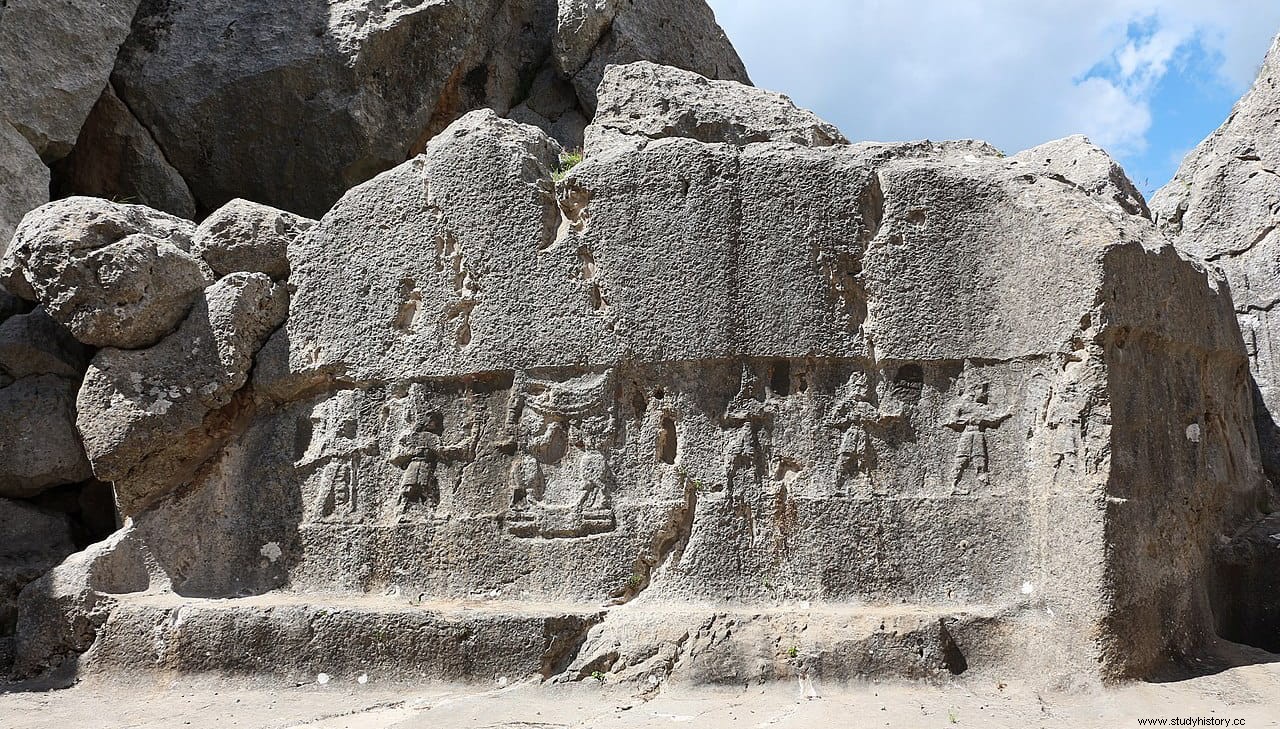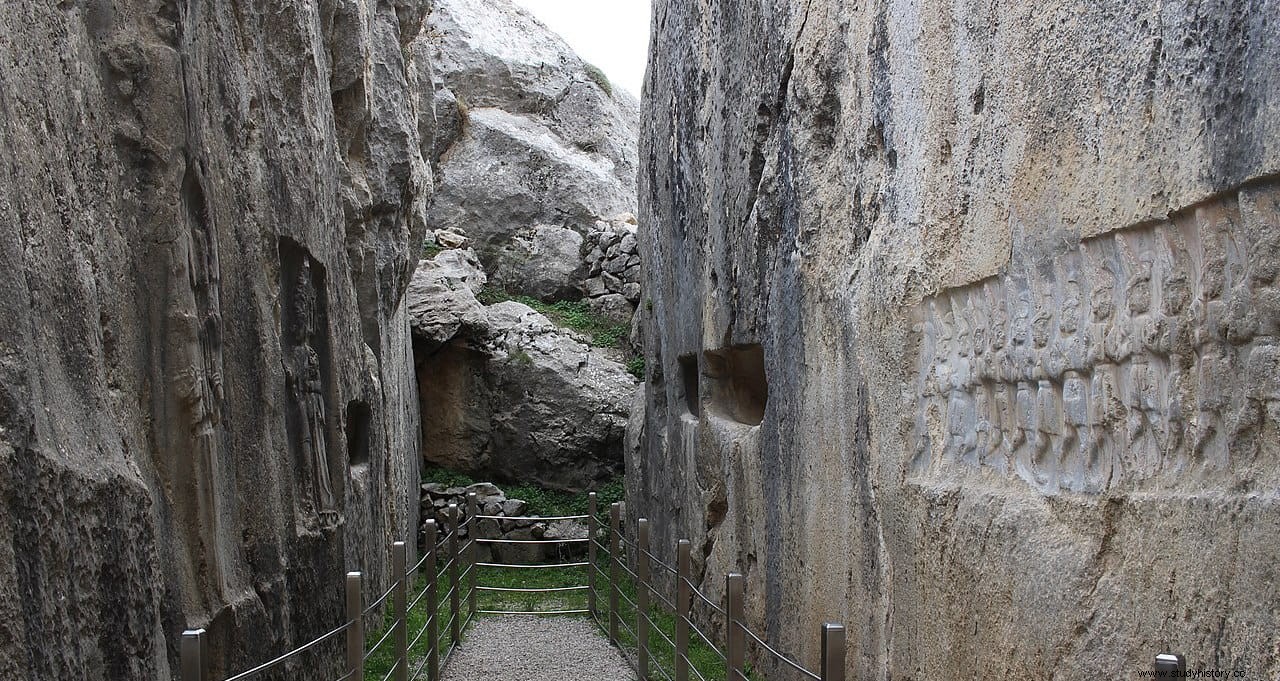Yazılıkaya is an approximately 3,200-year-old site that is believed to have played an important religious role in the ancient Hittite Empire. According to a new theory, the reliefs found at the site may have functioned as a calendar to mark days, synodic months and solar years.
Yazılıkaya, which in Turkish means carved rock it is a large Bronze Age limestone deposit, as mysterious as its name. Although the site's reliefs have been studied for decades, some experts now argue that key aspects have been overlooked.
Researchers believe that some reliefs of deities represent the number of days in a lunar month. There are also markings under some of the representations that seem to indicate its function as a calendar.

Eberhard Zangger, president of Luwian Studies, an international foundation dedicated to the study of the Luwians, and Rita Gautschy, of the University of Basel, are of the opinion that one of the reliefs containing 12 deities represents the months of a year and another containing 30 the days of a month.
They think that the ancient Hittites would have marked under the first of the 30 deities the beginning of a month, and then worked backwards to keep track of time. The importance of the full moon would also be represented in some of the carvings.

The number of figures in the relief does not correspond to the number of days in a year, but Zangger and Gautschy think that the Hittites would have used this system to determine when additional months were required to keep the lunar and solar years aligned.
They also suggest that other Hittite structures were built to mark important astronomical events, such as the Summer Solstice. In this sense, the authors, who have published their study in the Journal of Skyscape Archeology , indicate that numerous texts found in the Hittite capital Hattusa are related to solar deities and celestial divinations, which recalls the astrological and astronomical practices of ancient Babylon.
Yazılıkaya Shrine contains more than 90 rock carvings dating from the second half of the 13th century BC, depicting deities, humans, animals and mythical figures. It is located near the Turkish city of Bogazköy and just two kilometers from the Hittite capital Hattusa, of which it was the sanctuary and with which it forms the same archaeological site.
